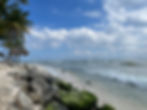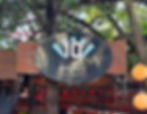

Once known as a major trade route and religious center for traveler trying to reach Cozumel has now transformed into a major cosmopolitan destination. This city has an appeal for all: nature lovers, history junkies and partygoers. You are able to find more authenticity in comparison to Cancun but have serenity similar to Puerto Morelos. There is so much more to see in this expanding place where adventure does not end.
NEW RESIDENTIAL DEVELOPMENT

PUNTA PARAISO
This gated OCEAN-FRONT community allows for privacy and tranquility that accesses the Caribbean Sea. Accompanied by amenities such as:
• Beach Club and Lake Club with Water Sports
• Tennis and Paddle Courts
• Parks: pets and children
• Restaurants and Bars
• Trails: walking and bike paths
• Social areas
Located near Xcaret Park
Only 10 minutes from Playa del Carmen, and 30 minutes from Cancun International Airport.
You do not want to miss this opportunity!
What makes up Playa del Carmen
BEACHES
Each location is only a few minutes from each other, walking or driving. The water is clean, and the waves are subtle. Esmeralda requires you to bring everything for the beach as there are no rentals available, stores or restaurants. The other locations do have rentals but are very limited as they are more crowded or occupied by beach clubs and hotels. There is parking but spots are limited, and the meters only take coins.




FOOD
You can walk through Fifth Avenue, a strip of esthetic restaurants and shops only found on playa Mamitas and Fundaores. Each location is very open with plenty of outdoor seating and even some live music. Before you enjoy the walk, parking is necessary and may be difficult to find in these locations as there are no garages. Afterward, walk to the beach as its only steps away.

Mexican seafood cuisines

Meat grill and wine bar

Authentic Italian food

Argentinian Grill
ACTIVITIES
At every beach you can catch all kinds of water sports: jet ski, banana boats, sailing, paddleboarding, and parasailing. The city is near archeological sites, waterparks, and amusement parks. However, some of the activities are found away from the beach and some may require transportation.




